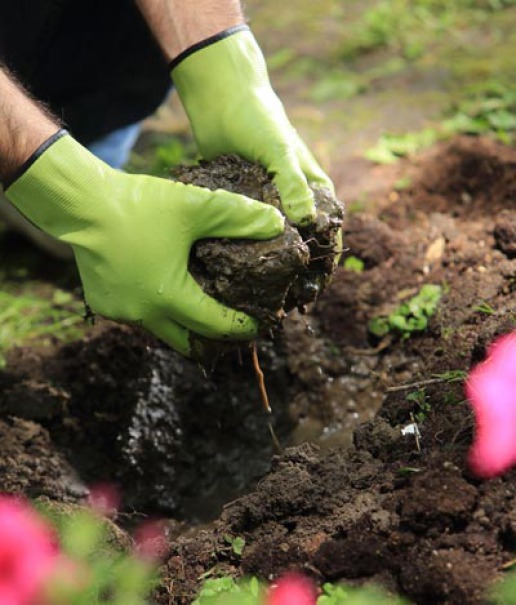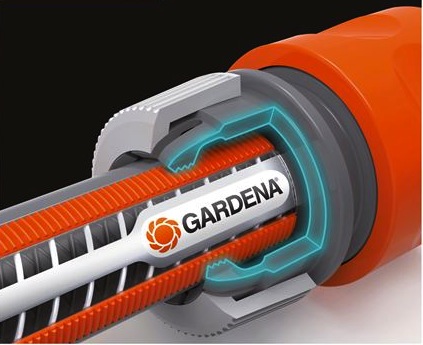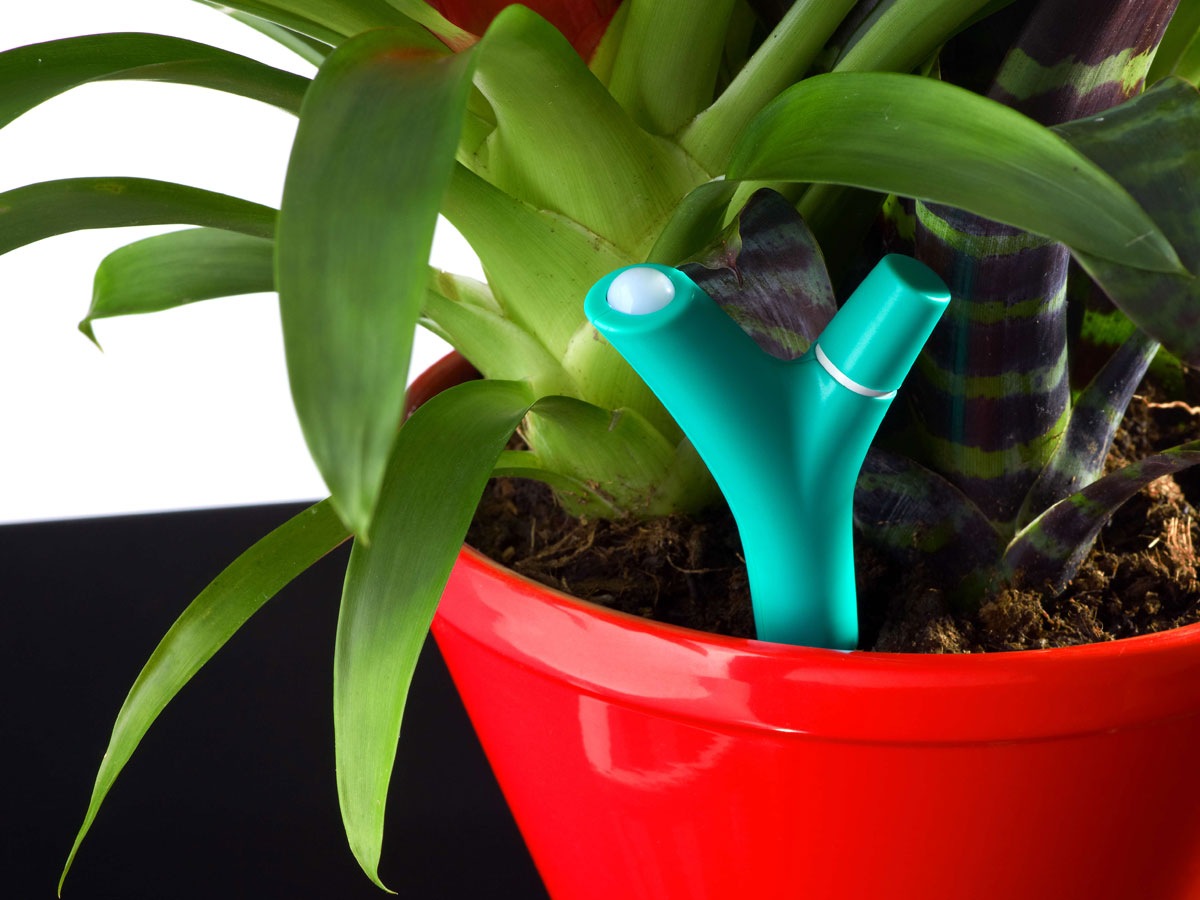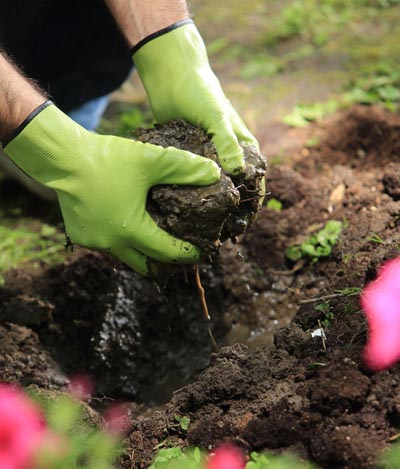
Bespoke polymers for gardeners
Europeans are the kings of gardening
The market of amateur gardening has grown steadily in Europe over the past twenty years; in fact, it has become so mature a market that it has garnered the interest of European statisticians. We now know that the English love their gardens, given that over 80% of them own one, while 70% of all French citizens own a garden. In comparison, only 34% of Spain's citizens are thought to own a garden. However, these figures are tempered by other, much more revealing statistics on the time spent in that personal green space. The French and the Germans, weather permitting, spend more time in their gardens (82% and 78% respectively) than the Spanish (64%) and the English (62%). Although the Spanish consider their gardens to be "essential places for well-being, meetings and sharing", the English perceive their own as spaces that are "well-suited to family entertainment".
More surprisingly, while Germans consider their gardens to be a "decorative place first and foremost", the French consider theirs to be an "additional room". These figures provide us with a better understanding of the reasons for which garden item manufacturers are not resting on their laurels and are constantly trying to innovate in order to make this hobby, which is decidedly a European favourite, even more enjoyable.
Initially a marriage of convenience
The love story between plastics and gardens is not a recent development. As in many cases, plastic objects became more widespread in the post-war period. Not surprisingly, it was more a matter of savings than a matter of high technology. As a result, the simple watering can's manufacturing cost (and therefore its price) plummeted substantially when it started being made from PEHD rather than galvanised steel. This also explains the appearance of many types of pots, planters, lawn-edgings, etc. As demand increased, high-tech manufacturers started investigating the amazing qualities of polymers. In the 1970s, they developed new generations of tools which would have been impossible to design without the materials derived from plastics, such as Xenoy®, for instance, a reputedly unbreakable polymer used to manufacture the casings for professional lawnmowers.
This also explains the appearance of many types of pots, planters, lawn-edgings, etc. As demand increased, high-tech manufacturers started investigating the amazing qualities of polymers. In the 1970s, they developed new generations of tools which would have been impossible to design without the materials derived from plastics, such as Xenoy®, for instance, a reputedly unbreakable polymer used to manufacture the casings for professional lawnmowers.
Soon after, manufacturers came up with new recycling methods to create compost bins or rainwater collecting tanks from used milk bottles, for instance. And the industry kept evolving from that point onwards.
Watering: plastics, not a pipe dream
It's no secret that nature needs water. In dry periods, watering is the only solution to avoid the grass turning yellow and lettuce wilting. This is where things can get complicated. After several months of non-use, garden hoses that are usually stored at the end of the garden often start to look like a big plate of spaghetti. Untangling the hose is just the beginning, because there is a high probability that the hose itself has been twisted. It will need to be unrolled and stretched as much as possible. Meanwhile, the tomatoes are starting to get thirsty. Fortunately, times have changed. Modern garden hoses have resolved all of these problems by superimposing up to five layers of polymers with very specific properties. Hoses are now technical products with very strong technological connotations. Of course, this new generation is much more expensive than simple vinyl hoses but it has the reputation of being indestructible, iIt must therefore be considered as an investment.

© Gardena
High-end hoses  are in fact made up of at least five layers of different plastics superimposed one on the other. Why use so many polymers? Because each polymer has a very specific purpose. The inner braid made from polyester, or even carbon, precludes twisting, the silky texture of PVC provides a good grip and enables the hose to slide on the grass, the polycarbonate coating guarantees durability over time, and rubber provides improved flexibility. The hoses can also be treated with anti-algae and anti-UV coatings. It must also be noted that the hoses are made from polymers without heavy metals and phthalates, ensuring that they meet food standards. Some companies, such as the German company Gardena, have innovated by including a plastic crenellated band in their hoses in order to ensure a perfect junction between the hose and the sprayer attachment, finally doing away with those irritating and water-wasting micro-leaks.
are in fact made up of at least five layers of different plastics superimposed one on the other. Why use so many polymers? Because each polymer has a very specific purpose. The inner braid made from polyester, or even carbon, precludes twisting, the silky texture of PVC provides a good grip and enables the hose to slide on the grass, the polycarbonate coating guarantees durability over time, and rubber provides improved flexibility. The hoses can also be treated with anti-algae and anti-UV coatings. It must also be noted that the hoses are made from polymers without heavy metals and phthalates, ensuring that they meet food standards. Some companies, such as the German company Gardena, have innovated by including a plastic crenellated band in their hoses in order to ensure a perfect junction between the hose and the sprayer attachment, finally doing away with those irritating and water-wasting micro-leaks.
© Gardena
Connecting hoses
No, garden hoses have not yet been connected to the World Wide Web. However, technologically-savvy gardeners can now find small objects which, once placed at the feet of their favourite plants, transmit all the information required to ensure the plant's proper development to a simple smart phone: air and soil humidity levels, sunshine, etc. Although this system works fairly well for house plants, they are obviously less well-suited to use in the garden.
© Parrot

That being said, and coming back to garden hoses, even the world's best hose would be nothing if it was not correctly connected to the water supply. Brass has long been the favourite for manufacturing connectors, as it does not rust. Although these connectors were effective, they remained very simple. Once installed with a hose clamp, a tool box was required any time accessories had to be changed — nozzle, sprinkler, extension, etc. Plastics came

as a real revolution in the matter. Modern high-end connectors are technical marvels. Much like the hoses themselves, they are made from various polymers, including elastomers providing a better grip and therefore better handling. Thanks to ingenious spring systems, a simple pull is enough to connect them to a tap or an accessory while proving to be perfectly watertigh. And best of all, they are often designed with aesthetic values in mind as home gardeners enjoy a pleasing appearance for their tools.
Suited and booted
The same type of demand is appearing for clothing and shoes. Much like athletes, amateur gardeners want comfortable clothes that are appropriate for their needs, and attractive too. The market has exploded and manufacturers now attach great importan ce to the aesthetic side of things. And the wide range of plastics is where they turn to find the new materials used to make these clothes which can unreservedly be described as technical in nature. Manufacturers of boots and shoes are without a doubt the most advanced in this regard. Although the uppers on high-end shoes are made from natural rubber, the soles are usually made from a mix of PVC and synthetic rubber often used in gloves for its high flexibility. For good reason, too, because designing a good sole is an art in and of itself given that it must provide perfect insulation, be sufficiently flexible, be robust and provide good adherence to the steepest and slickest floors.
ce to the aesthetic side of things. And the wide range of plastics is where they turn to find the new materials used to make these clothes which can unreservedly be described as technical in nature. Manufacturers of boots and shoes are without a doubt the most advanced in this regard. Although the uppers on high-end shoes are made from natural rubber, the soles are usually made from a mix of PVC and synthetic rubber often used in gloves for its high flexibility. For good reason, too, because designing a good sole is an art in and of itself given that it must provide perfect insulation, be sufficiently flexible, be robust and provide good adherence to the steepest and slickest floors.
Manufacturers designed honeycomb structures aimed at ensuring greater comfort and improved flexibility. The studs are also extensively tested in order to ensure optimal adherence on all types of terrain. However complex their design may be, they can be easily produced due to the plastics being so easy to mould.
The green-finger guarantee
Feet are not the only ones to be pampered. Gardeners usually work with their hands, so they must be protected at all costs. Until recently, only leather provided maximum protection against the assault of thorns. The only  problem was that the material precluded any sense of touch, which is a problem in manual weeding operations where the weed has to be pulled out by its base to remove the root. However, a revolution recently took place in the world of gardening gloves! All thanks to synthetic rubbers, which are flexible and elastic materials, and polyamides and polyesters for their resistance to abrasion, and even untearable Kevlar. In short, over a dozen different types of materials can be found in the catalogues of gardening glove manufacturers. Enough to meet all needs. © Rostaing
problem was that the material precluded any sense of touch, which is a problem in manual weeding operations where the weed has to be pulled out by its base to remove the root. However, a revolution recently took place in the world of gardening gloves! All thanks to synthetic rubbers, which are flexible and elastic materials, and polyamides and polyesters for their resistance to abrasion, and even untearable Kevlar. In short, over a dozen different types of materials can be found in the catalogues of gardening glove manufacturers. Enough to meet all needs. © Rostaing
Polycarbonate, a plastic which is ultra-resistant to impact and deformation, also recently made its appearance in the field in the form of a shell placed over the glove. It is currently the best solution for protecting one's hands against, for instance, the catastrophic results of a chainsaw chain's slackening.
A different story
With dry feet and protected hands, all that's left is to get down to the actual work. Crack! All gardeners have heard that noise at least once in their lives. Right in the middle of tilling the vegetable garden, the garden hoe's handle breaks in half. Although those with a little foresight will always have one or two spares, most gardeners do not. It is obviously not a big deal, but it can be downright dangerous should it occur to the handle of a pickaxe or a sledgehammer. Wooden handles have the unfortunate disadvantage of being fragile and being susceptible to breaking without warning. This is why metals such as aluminium and steel are increasingly used to manufacture quality handles. However, it is not the perfect solution as they have disadvantages to go with their qualities. Robust steel is very heavy, and light aluminium has a tendency to deform. High-end tool manufacturers naturally turned towards composite materials, and more specifically towards fibreglass-reinforced polypropylene.
© Fiskars - Leborgne
The handles manufactured in this way are unbreakable! But that's not all. Thanks to composite moulding capabilities, they are also ergonomic. The handles of dangerous tools now have a built-in bulge at the end in order to avoid the tool jumping out of a user's hands after an impact. Finally, they are coated in a layer of elastomer to provide a good grip even when wet and to avoid causing blisters. Some brands have even developed "clip" systems enabling tools to be easily interchanged. As a result, the same handle can be used for a pitchfork, spade, or shovel, etc.
No more flat tires!
© John Deere
Mowing the lawn is without doubt the worst of chores for any gardener. Unfortunately, polymers have not provided a way to do away with it. However, they can make it less tedious or at least help out in this thankless task. French manufacturer Michelin developed a revolutionary new tyre for rider mowers. An airless puncture-proof tyre! There are no similarities with cartwheels, quite the contrary in fact, given the long development cycle it required. The key to its development was the mastery of new composite materials (unfortunately, that is all the information we have been given) used in the manufacture of the spokes. They provide the same amount of flexibility as compressed air and the same resistance to torsion as the sidewalls of conventional tyres.
Although the tyre may be puncture-proof, gardeners certainly are not. After all this effort, a well-deserved nap in the garden is in order.





